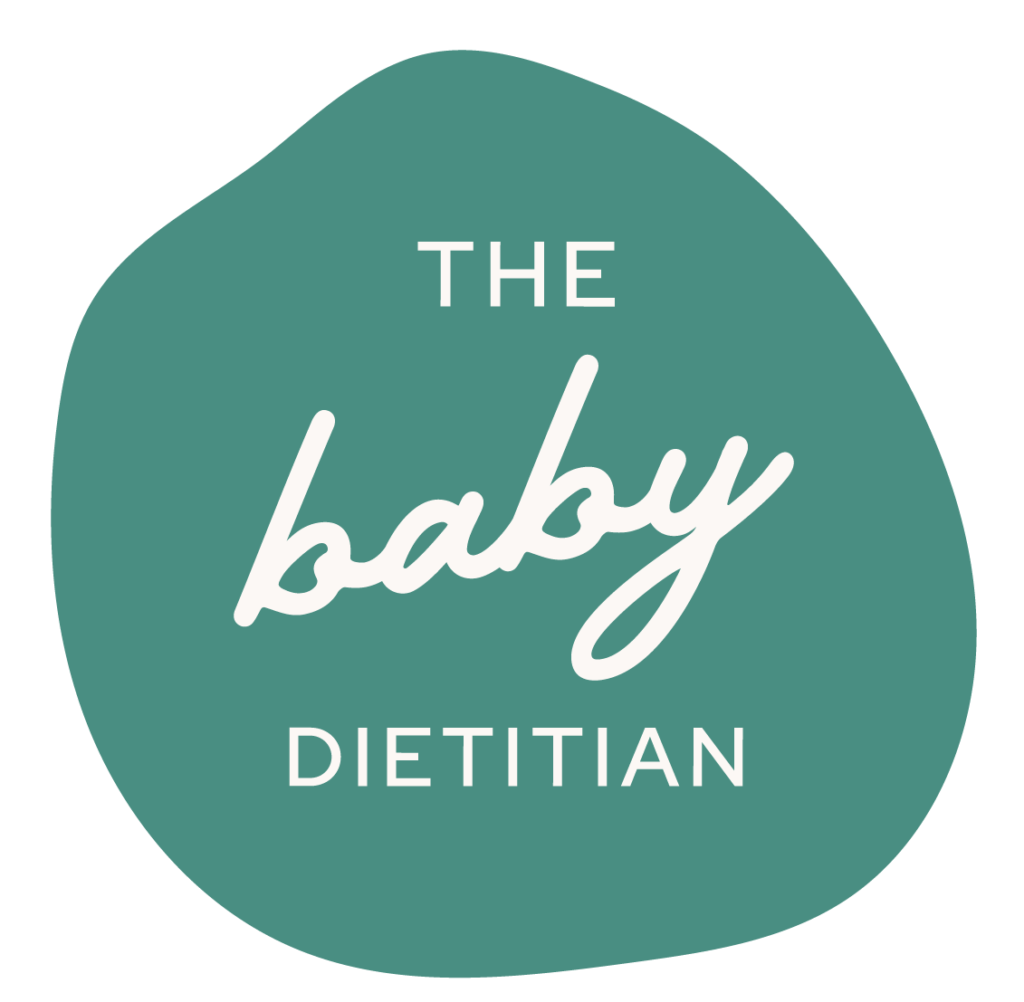______________________________________________________________________



Navigating Sodium Intake in Children
Do you often wonder how much sodium is recommended for your little one, what foods are high in sodium, and how to ensure your kiddo is eating the right amount? Today, we’ll be talking about all things sodium and answer all your burning questions. As a pediatric dietitian, sodium intake is one of the most important things I like to go over with my families – so without further ado, let’s dive in!
What is Sodium?
Sodium is an essential mineral that plays a crucial role in various bodily functions, including nerve signaling and fluid balance. It is often found in foods like breast milk, formula, dairy, eggs, meats, produce, and more. Table salt is composed of sodium in addition to chloride (also known as sodium chloride, NaCl). It is naturally occurring and our bodies need it to function, however, it is advised to be mindful of the amount our kiddos consume daily!
What are the Guidelines for Sodium Intake?
It is important to note that while these guidelines were established by the Dietary Guidelines for Americans (3), we don’t have a lot of research on the impacts of excess sodium intake on babies. So we advise you to take the recommendations with a grain of salt (pun intended!) and remember that naturally occurring sodium in foods is not as much of a concern, it’s more so the excessive intake of processed foods that you want to watch out for.
According to the American Academy of Pediatrics and the Dietary Guidelines for Americans (2,3), the current recommendations are as follows:
Not only are these amounts per day important to note, but it can be helpful to gauge how much you should be offering per meal in order to stay on track throughout the day! Generally, we recommend these per serving:
- 0-12 months: <50 mg per serving
- 12-24 months: <100 mg per serving
- Over 2 years of age: <150 mg per serving
Sodium and Impact on Baby’s Health
As we discussed earlier, there is a lack of research on the topic of how sodium intake impacts children. There are various research articles that show very niche scenarios of excessive sodium causing issues. For example, there is an old research that studied infants that were introduced to solids at a very early age, between 1-3 months, and noticed negative health impacts (1). The foods they were served were processed and excessively high in sodium as well. At this age, the kidneys are not fully mature and they are not ready for any solid foods, this is why they typically only consume breast milk and/or formula. So it is important to remember that context matters!
However, the American Academy of Pediatrics does state “Adding moderate amounts of salt to food for taste is acceptable, but excessive amounts of salt should be discouraged as the child’s taste preferences are formed early and large quantities of sodium may lead to high blood pressure later in life.” (2)
With all that being said, we do want our babies to enjoy food without them needing to be salted! The AAP indicates that salting food early can potentially develop taste preferences later in life, and we don’t want them to be picky eaters as children either!
The NHANES showed some statistics that of surveyed children and adolescents, 90% exceeded the recommended sodium level for their age and more than 50% of sodium intake came from processed foods (4). As you can see, the concerns with excess sodium are mainly driven by foods that are processed, not foods that are naturally occurring.
Additionally, new research has shown that a salt deficiency can have detrimental effects on children’s growth, while also showing that excess salt intake may also be associated with the development of obesity in children (6). Needless to say, we don’t want to completely remove sodium from your kiddo’s diet, but we want to remain mindful of excess sodium as well!
While we don’t have a lot of research on the impacts that excess sodium has on babies, we do have research on how excess sodium affects adults physiologically (5). Knowing that, it does not hurt to err on the side of caution when providing sodium to your kiddo. Ultimately, we want to remain evidence-based when making decisions for our children, so following the current guidelines as they were established is the safest and best route to go!
Now that you know how much sodium your kiddo should be eating per day, the question arises – how do I check the amount of sodium in a food?
Let’s Talk Nutrition Labels
Being able to read through a nutrition label and identify if a food is too high in sodium is imperative as a caregiver! We’re going to provide some easy tips and tricks to help you swiftly break down a nutrition label when it comes to sodium content and your kiddo’s needs.
Remember that for under 1 year of age, you want to ensure that your baby is having less than 50 mg of sodium per serving, between 1 and 2 years of age we aim for 100 mg per serving, and for over 2 years of age, you want to aim for less than 150 mg per serving.
These two photos show a label that has the correct amount of sodium based on under 1 and over 2 age ranges.
One important thing to note is to look for the amount of servings in a package and what the recommended serving size is, in order to equal the amount of sodium on the label. For example, the first photo states that there are 3 servings per container, and one serving would equal a tablespoon of the product.
So 1 tablespoon is 140mg. This is important! If you were to give your kiddo the entire container, they would actually be consuming 420 mg of sodium, which is a whole lot more than you anticipated! See the attached photo below for a closer look!
The last thing to note about reading nutrition labels is what to do if there is more sodium in the food you purchased than you want to be providing for your child. There is a quick workaround for this!
In the photo below, we see that one serving has 310 mg of sodium, which may be excessive for a young eater. In this case, we could just halve the serving size! Instead of providing 1 tablespoon, we can provide ½ tablespoon bringing us to 155 mg of sodium, which is about on par with a serving size for a kiddo over 2.
A good example of when this would be helpful is when serving mac and cheese with a premade seasoning packet. The seasonings are often high in sodium, so you can serve the same amount of the actual pasta, but just cut the serving size of the seasoning packet into a smaller portion!
What High Sodium Foods Should I Look Out For?
Now that you know where to look, let’s point out some common foods that are high in sodium! They may include:
- Sauces (like pasta sauce or soy sauce)
- Deli meats
- Condiments and Dressings
- Canned foods
- Premade packaged foods
- Preserved vegetables
- Hard cheeses
- Fast foods
- Frozen meals
Reducing Overall Sodium Intake
Remember, at this age, baby is exploring solid food and learning how to eat it. As a result, they typically do not consume a significant amount of solid food at mealtimes. In other words, the amount of sodium that they consume from solid food is typically low at first.
If you are looking for ways to reduce sodium as baby starts to consume greater quantities of solid food, here are a few options:
- When it is possible, try to use reduced or no sodium products (like canned foods)!
- If you can’t find low-sodium versions of canned foods like beans or vegetables, drain and rinse them thoroughly before using. This can help reduce the sodium content.
- If you are making meals for the whole family, before adding salt to the dish, set aside a portion for your kiddo!
- If you are able, homemade meals can help reduce overall sodium intake since you can control the amount of sodium in a dish, and pre-packaged foods tend to be higher in sodium as well.
- For adding flavor without adding salt, try using herbs and spices that are naturally low in sodium.
- Opt for fresh fruits and vegetables, as well as fresh meats, poultry, and fish instead of processed or pre-packaged foods, which often contain high levels of sodium.
- Remember to always read the food labels before purchasing so you don’t ever get stuck with a high sodium ingredient as your only option for a meal!
- Feel free to adjust recipes and portion sizes if need be to reduce the sodium content.
While sodium is an essential nutrient, moderation is key, especially in children! By being mindful of sodium guidelines, identifying high-sodium foods, and incorporating healthier alternatives into children’s diets, we can help safeguard their health and well-being for years to come.
If you find yourself looking for more guidance on your unique situation, click here to schedule a 1:1 consultation with one of our pediatric registered dietitians!
1- DAHL, L. K., HEINE, M., & TASSINARI, L. (1963). High salt content of western infant’s diet: possible relationship to hypertension in the adult. Nature, 198, 1204–1205. https://doi.org/10.1038/1981204a0
2- The American Academy of Pediatrics (2021). We don’t need to add salt to food. Healthy Children. https://www.healthychildren.org/English/healthy-living/nutrition/Pages/We-Dont-Need-to-Add-Salt-to-Food.aspx
3- U.S. Department of Agriculture and U.S. Department of Health and Human Services. (2020-2025). Dietary Guidelines for Americans. 9th Edition. December 2020. https://www.dietaryguidelines.gov/sites/default/files/2021-03/Dietary_Guidelines_for_Americans-2020-2025.pdf
4- (2015-2016). The National Health and Nutrition Examination Surveys. Centers for Disease Control and Prevention. https://wwwn.cdc.gov/nchs/nhanes/continuousnhanes/overview.aspx?BeginYear=2015
5- Hunter, R. W., Dhaun, N., & Bailey, M. A. (2022). The impact of excessive salt intake on human health. Nature reviews. Nephrology, 18(5), 321–335. https://doi.org/10.1038/s41581-021-00533-0
6- Mazzuca, G., Artusa, S., Pietrobelli, A., Di Cara, G., Piacentini, G., & Pecoraro, L. (2024). The Future for the Children of Tomorrow: Avoiding Salt in the First 1000 Days. Children (Basel, Switzerland), 11(1), 98. https://doi.org/10.3390/children11010098
Want more? My course is a 100% evidence-based approach to starting solids in a way that encourages a healthy dietary pattern from the start.
Check out the Starting Solids 101 Course now!
Access Course Now

Cinthia Scott is a Registered Dietitian (RD) and International Board Certified Lactation Consultant (IBCLC) with over 7 years experience in the field of dietetics. Cinthia focuses on ensuring optimal nutrition in the first 1000 days of life to ensure optimal growth and development as well as set the stage for long-term health. Cindy is an author, starting solids expert, and advocate for caregivers receiving evidence based education and support surrounding breastfeeding and starting solids.
Cinthia is co-author of the 101beforeone Starting Solids Book, “101beforeone -baby-led feeding cookbook,” and is the founder and owner of The Baby Dietitian LLC which is her private practice built to provide virtual 1:1 services for caregivers surrounding infant nutrition, toddler nutrition, and breastfeeding support. Cinthia is also the creator of the Starting Solids 101 Program which provides caregivers 1:1 support from a Pediatric Dietitian on how to provide optimal nutrition from the start and create healthy eating habits that will last their whole lifetime. To work with Cinthia, you can access her services here.
Cinthia provides tons of free information for parents on her social media accounts as well.
- Instagram: @The.Baby.Dietitian
- Tiktok: @The.Baby.Dietitian

